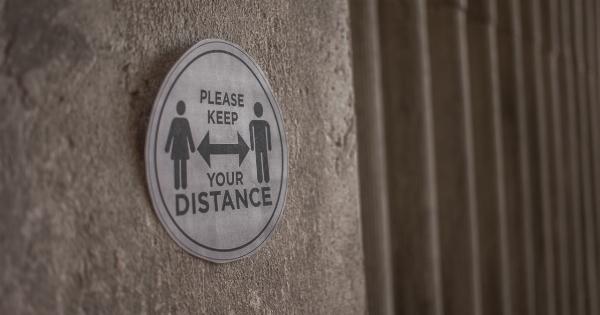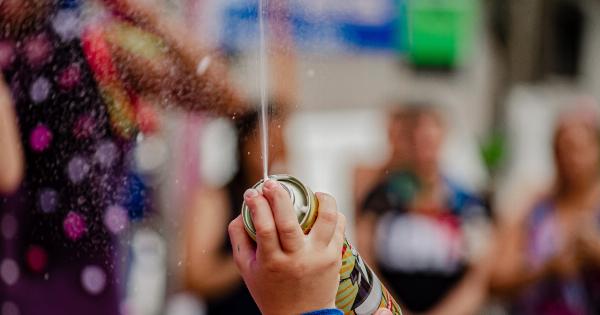Accidents are an unfortunate reality of life. They can happen anywhere, at any time, and to anyone. Whether you are at home, on the road, or at work, accidents can have serious consequences.
Therefore, it is important to take proactive measures to protect yourself and minimize the risk of accidents. In this article, we will explore various ways to safeguard yourself from accidents and ensure your safety in different environments.
1. Safety at Home
Your home is supposed to be a haven, a place where you feel safe and secure. However, accidents can happen even within the confines of your home. To protect yourself and your loved ones, follow these safety tips:.
a) Install Smoke Detectors and Fire Extinguishers: Every home should have operational smoke detectors installed on every floor. Additionally, it is crucial to have fire extinguishers readily available in case of a fire emergency.
Make sure to place them in easily accessible areas, such as the kitchen and garage.
b) Keep Walkways Clear: Cluttered walkways are a recipe for accidents. Ensure that your hallways and staircases are clear of any obstacles that may cause trips and falls.
If you have young children or elderly family members, consider installing handrails or guardrails to provide extra support.
c) Secure Loose Carpets and Rugs: Loose carpets and rugs pose a significant tripping hazard. Use double-sided tape or rug grippers to secure them to the floor and prevent accidents.
d) Childproof Your Home: If you have young children, it is essential to childproof your home.
Install safety gates at the top and bottom of staircases, secure heavy furniture to the wall to prevent tipping, and cover electrical outlets to avoid electrocution.
e) Use Non-Slip Mats in Bathrooms: Bathrooms are common places for slips and falls. Place non-slip mats both inside and outside the bathtub or shower to provide traction and prevent accidents.
2. Staying Safe on the Road
When you’re out driving or walking on the road, accidents can occur due to various reasons. To protect yourself and others while on the road, consider the following safety precautions:.
a) Obey Traffic Rules: Follow all traffic rules and regulations, including speed limits, traffic signals, and road signs.
Avoid distracted driving or walking, such as using your phone or listening to loud music, as it decreases your awareness of your surroundings.
b) Wear Seatbelts: Always wear your seatbelt when driving or riding in a vehicle. Seatbelts can save lives and minimize injuries during accidents.
c) Use Crosswalks: Cross the road at designated crosswalks whenever possible. Look both ways before crossing, even if you have the right of way, as some drivers may not obey traffic signals.
d) Stay Visible: If you’re walking or cycling at night, wear reflective clothing or use reflective accessories to ensure that drivers can spot you easily.
e) Avoid Impaired Driving: Never drive under the influence of alcohol, drugs, or any other substances that impair your ability to operate a vehicle safely. It not only puts your life at risk but also endangers others on the road.
3. Workplace Safety
Whether you work in an office or a construction site, workplace safety should be a top priority. The following measures can help protect you from accidents and ensure a safer working environment:.
a) Adhere to Safety Protocols: Always follow the safety protocols and guidelines set by your organization.
This includes wearing appropriate personal protective equipment (PPE), operating machinery correctly, and reporting any unsafe conditions or near-miss accidents.
b) Take Regular Breaks: Fatigue can lead to accidents. Take regular breaks to rest and recharge, especially if your job involves physical labor or long hours of sitting.
c) Keep Your Workspace Clean and Organized: A cluttered workspace increases the chances of accidents and injuries. Keep your area clean and organized, ensuring that all tools and equipment are stored properly when not in use.
d) Attend Safety Training Programs: Take advantage of any safety training programs offered by your employer. These programs equip you with valuable knowledge and skills to prevent accidents and handle emergencies effectively.
e) Report Hazards: If you notice any potential hazards in your workplace, report them to the appropriate authority immediately. Prompt action can prevent accidents and create a safer work environment for everyone.
4. Outdoor Activities
Engaging in outdoor activities is a great way to stay active and enjoy nature. However, it is important to take precautions to avoid accidents or injuries during these activities:.
a) Use Protective Gear: Depending on the activity, wear appropriate protective gear such as helmets, knee pads, or life jackets. This applies to activities like cycling, skateboarding, skiing, and water sports.
b) Stay Hydrated: Dehydration can lead to dizziness and fatigue, increasing the risk of accidents. Drink plenty of water before, during, and after outdoor activities to stay properly hydrated.
c) Be Aware of Your Surroundings: When hiking or exploring unfamiliar areas, be mindful of the terrain and any potential hazards. Watch out for slippery surfaces, unstable rocks, or wildlife that may pose a threat.
d) Buddy System: Whenever possible, participate in outdoor activities with a companion. The buddy system ensures that someone is there to help in case of an accident or emergency.
e) Follow Safety Guidelines: If you’re trying out new activities or sports, familiarize yourself with the safety guidelines and rules. Ignoring these guidelines can result in accidents or injuries.
5. First Aid and Emergency Preparedness
Even with the utmost precautions, accidents can still occur. Therefore, it is crucial to be prepared for emergencies and have basic knowledge of first aid. These measures can make a significant difference in the outcome of an accident:.
a) First Aid Training: Enroll in a first aid training course to acquire essential life-saving skills. Knowing how to perform CPR, handle minor injuries, and manage emergencies can potentially save lives.
b) Assemble a First Aid Kit: Keep a well-stocked first aid kit at home, in your car, and at your workplace. The kit should include essentials such as bandages, antiseptic solutions, pain relievers, and emergency contact details.
c) Learn Fire Safety: Understand how to use a fire extinguisher and have an evacuation plan in case of a fire. Teach your family or colleagues about fire safety practices to ensure everyone’s well-being.
d) Know Emergency Numbers: Keep a list of emergency contact numbers, including local police, fire department, and medical services. This information should be easily accessible at home and programmed into your phone.
e) Stay Calm: In the event of an accident or emergency, try to remain calm and think clearly. Panicking can hinder your ability to provide appropriate assistance and follow necessary protocols.
By taking these precautions and following safety measures, you can significantly reduce the risk of accidents and protect yourself from their repercussions.
Remember, safety should always be a priority, no matter where you are or what you’re doing.






























